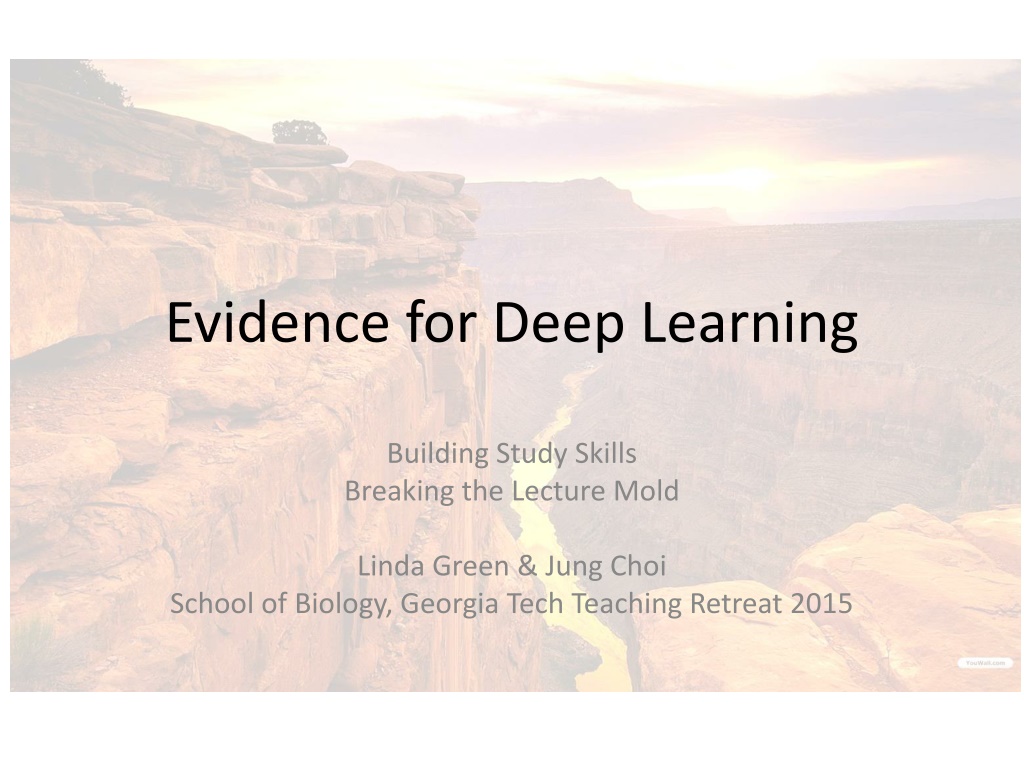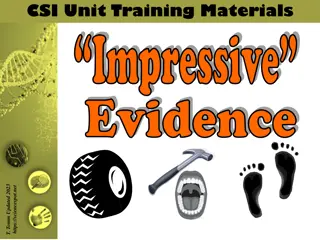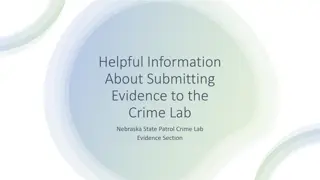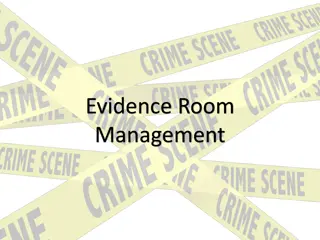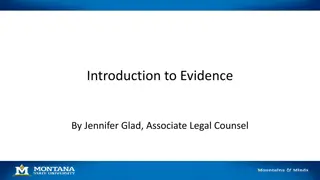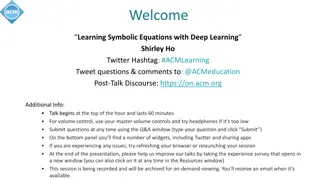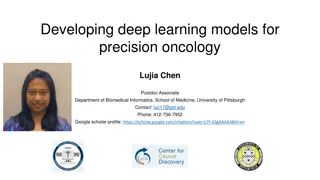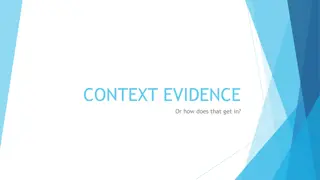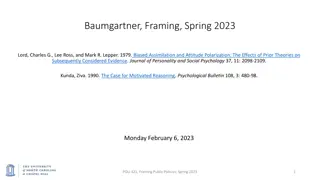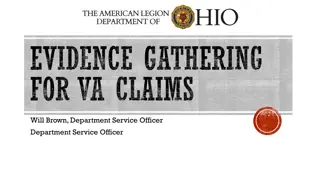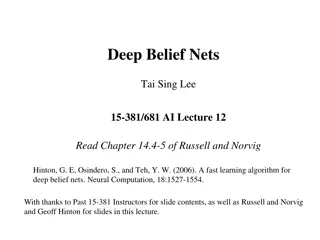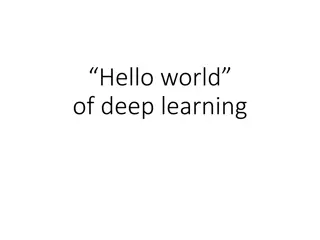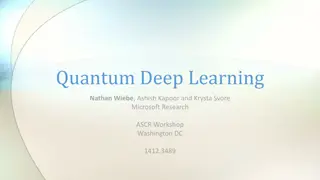Evidence for Deep Learning
Metacognition can enhance student learning experiences by promoting self-awareness and problem-solving skills. Discover why developing metacognitive skills is crucial and how effective strategies can lead to academic success.
Download Presentation

Please find below an Image/Link to download the presentation.
The content on the website is provided AS IS for your information and personal use only. It may not be sold, licensed, or shared on other websites without obtaining consent from the author.If you encounter any issues during the download, it is possible that the publisher has removed the file from their server.
You are allowed to download the files provided on this website for personal or commercial use, subject to the condition that they are used lawfully. All files are the property of their respective owners.
The content on the website is provided AS IS for your information and personal use only. It may not be sold, licensed, or shared on other websites without obtaining consent from the author.
E N D
Presentation Transcript
Evidence for Deep Learning Building Study Skills Breaking the Lecture Mold Linda Green & Jung Choi School of Biology, Georgia Tech Teaching Retreat 2015
Our focus today is to consider how to create deeper learning experiences for our students by Incorporating metacognition strategies Breaking the lecture model
Metacognition The ability to: think about one s own thinking be consciously aware of oneself as a problem solver monitor, plan, and control one s mental processing (e.g. Am I understanding this material, or just memorizing it? ) accurately judge one s level of learning Flavell, J. H. (1976). Metacognitive aspects of problem solving. In L. B. Resnick (Ed.), The nature of intelligence (pp.231-236). Hillsdale, NJ: Erlbaum
Why havent most students developed metacognitive skills? It wasn t necessary in high school
The Story of Two Students Travis, junior psychology student 47, 52, 82, 86 B in course Dana, first year physics student 80, 54, 91, 97, 90 (final) A in course
Why Can Students Make Such a Fast and Dramatic Increase? It s all about the strategies!
Counting Vowels in 45 seconds How accurate are you? Count the vowels in the words on the next slide.
Dollar Bill Dice Tricycle Four-leaf Clover Hand Six-Pack Seven-Up Octopus Cat Lives Bowling Pins Football Team Dozen Eggs Unlucky Friday Valentine s Day Quarter Hour
How many words or phrases from the list do you remember?
Lets look at the words again What are they arranged according to?
Dollar Bill Dice Tricycle Four-leaf Clover Hand Six-Pack Seven-Up Octopus Cat Lives Bowling Pins Football Team Dozen Eggs Unlucky Friday Valentine s Day Quarter Hour
NOW, how many words or phrases from the list do you remember?
1. We knew what the task was 2. We knew how the information was organized
What we know about learning Active learning is more lasting than passive learning -- Passive learning is an oxymoron* Thinking about thinking is important Metacognition** The level at which learning occurs is important Bloom s Taxonomy*** *Cross, Patricia, Opening Windows on Learning League for Innovation in the Community College, June 1998, p. 21. ** Flavell, John, Metacognition and cognitive monitoring: A new area of cognitive developmental inquiry. American Psychologist, Vol 34(10), Oct 1979, 906-911. *** Bloom Benjamin. S. (1956). Taxonomy of Educational Objectives, Handbook I: The Cognitive Domain. New York: David McKay Co Inc.
This pyramid depicts the different levels of thinking we use when learning. Notice how each level builds on the foundation that precedes it. It is required that we learn the lower levels before we can effectively use the skills above. Bloom s Taxonomy Creating Putting elements together to form a coherent or functional whole; reorganizing elements into a new pattern or structure through generating, planning, or producing. Making judgments based on criteria and standards through checking and critiquing. Evaluating Breaking material into constituent parts, determining how the parts relate to one another and to an overall structure . Analyzing Carrying out or using a procedure through executing, or implementing. Applying Constructing meaning from oral, written, and graphic messages through interpreting, exemplifying, classifying, summarizing, inferring, comparing, and explaining. Understanding Retrieving, recognizing, and recalling relevant knowledge from long-term memory. Remembering http://www.odu.edu/educ/llschult/blooms_taxonomy.htm
How do we teach students to move higher on Bloom s Taxonomy? Teach them the Study Cycle *adapted from Frank Christ s PLRS system
The Study Cycle 4 4 3 Reflect Reflect Review Preview Preview before class Skim the chapter, note headings and boldface words, review summaries and chapter objectives, and come up with questions you d like the lecture to answer for you. Attend Attendclass GO TO CLASS! Answer and ask questions and take meaningful notes. Review Review after class As soon after class as possible, read notes, fill in gaps and note any questions. Study Study Repetition is the key. Ask questions such as why , how , and what if . Intense Study Sessions* - 3-5 short study sessions per day Weekend Review Read notes and material from the week to make connections Assess Assess your Learning Periodically perform reality checks Am I using study methods that are effective? Do I understand the material enough to teach it to others? Intense Study Sessions Decide what you want to accomplish in your study session 1 Set a Goal 1-2 min Interact with material- organize, concept map, summarize, process, re-read, fill-in notes, reflect, etc. 2 Study with Focus 30-50 min 3 Reward Yourself 10-15 min Take a break call a friend, play a short game, get a snack 4 Review 5 min Go over what you just studied Center for Academic Success B-31 Coates Hall 225.578.2872 www.cas.lsu.edu
Two Valuable References Gabriel, Kathleen F. (2008) Teaching Unprepared Students. Sterling, VA: Stylus Publishing Nilson, Linda. (2013) Creating Self- regulated Learners Sterling, VA: Stylus Publishing
What happens when we teach metacognitive learning strategies, Bloom s Taxonomy, and the Study Cycle to an entire class, not just individuals?
Performance in Gen Chem I in 2011 Based on One Learning Strategies Session Attended 71.65% 77.18% 81.60% B Absent 70.45% 68.90% 70.43% C Exam 1 Avg.: Exam 2 Avg.: Final course Avg*.: Final Course Grade: The one 50-min presentation on study and learning strategies resulted in an improvement of one full letter grade! *Cook, E.; Kennedy, E.; McGuire, S. Y. J. Chem. Educ., 2013, 90 (8), 961 967
Performance in Gen Chem 1202 Sp 2013 Based on One Learning Strategies Session Attended 71.33% 169.8 82.36% B Absent 69.27% Exam 1 Avg.: Homework Total Final course Avg*.: Final Course Grade: 119.1 67.71% D The 50-min presentation on study and learning strategies resulted in an improvement of two letter grades!
Typical study habits for exam 1, BIOL 1520 at GT 50% spend < 10 hours, 25% spend > 15 hours in intensive exam-prep studying Most start studying on Sunday (S14) or Tuesday (F13) for Thursday exam Most common tactics are reviewing lecture slides, then notes in F13; reviewing LC questions, then notes in S14 Most common ideas of what to do differently: study earlier/more and change focus/method Compiled from F13 and S14
Typical study habits for exam 4, BIOL 1520 at GT Most start studying on Tuesday for Thursday exam Most common tactics are reviewing lecture slides, then mastering biology homework 40 35 30 25 20 15 10 5 0 33% feel more comfortable with the material than the same moment prior to exam 3 Compiled from S14
We cansignificantly increase learning by teaching students how to learn making the implicit explicit not judging student potential on initial performance Implementing small interventions to address psychological factors encouraging the use of metacognitive tools
Flipping/Inverting the Classroom The flipping method of classroom instruction relies on significant student engagement of the material prior to class, interactive learning techniques during class, and reinforcement of the material after class through homework The goals are to increase student engagement and comprehension during the class period to move the bulk of instructor-directed content outside of class and use class time to engage in activities where students drive the pace of learning. students spend class time recognizing what they know and don t know, and instructor can better assess student learning.
How can we guide learning and metacognition among novice students? because as we know, there are known knowns; there are things we know that we know. There are known unknowns; that is to say, there are things that we now know we don't know. But there are also unknown unknowns there are things we do not know we don't know. Donald Rumsfeld
Asked of Biol 1511 students fall 2014: What is the most effective way for you to learn? In situations where you learned a lot, what worked? 5/42 mentioned only passive modes (listening to lecture, reviewing) 7/42 primarily note-taking during reading, lecture 29/42 highly active modes (drawing, small group discussion, quizzing, teaching others, homework problems, lab exercises)
Fig. 2 Highly structured course designs benefit all students, but especially disadvantaged students. D C Haak et al. Science 2011;332:1213-1216 Published by AAAS
Using higher blooms taxonomy at little cost When UMich Intro Bio instructors flipped their course, they saw post-hoc that the nature of their exams changed harder! Student performance stayed the same despite more challenging questions M. Duffy, Dynamic Ecology blog
1520 Class Structure 92 (85) students, 35% BIOL majors 3-5 Learning Objectives per class or 2-class topic Pre-class video, animation, or reading assignment paired with a 5 question Incoming Knowledge Evaluation (IKE) in Learning Catalytics Team-based In-Class Activities (TICA) for every class period, interspersed with 10 min lecturettes and Learning Catalytics questions Post-class weekly homework assignments using a Mastering Biology
Fall 13 versus Spring 14 80 78 76 Exam Score Fall 2013 74 Spring 2014 72 70 68 1 2 3 4 5 Fall: 121 students, 29% BIOL. Spring: 92 students, 35% BIOL.
95 Fall Overall Grade Spring Overall Grade 90 85 91.5 90.6 90.6 87.0 80 90.3 87.0 87.6 87.5 85.1 86.4 85.3 84.2 81.7 75 79.9 80.2 76.1 70 Bus Ch/BCh Bio Eng IAL Psy CS Overall Bus 7 4 Ch/BCh 9 7 Bio 35 30 Eng 26 21 IAL 8 2 Psy 9 9 CS 19 6 Overall 116 85 F_N S_N
In-Class Activities Working in a team helped me better understand the material I was engaged and focused during class all or most of the time I was more likely to be distracted during work time c/t Dr. Green lecturing I generally understood the material from pre-class activity, class was unnecessary I would rather have moved past the basic principles and spent class in applied scenarios It was clear to me from class activity what I needed to know for that topic Strongly disagree Disagree Neither Agree Strongly agree
Big Ideas for Smaller Classes Homework portfolios Authentic experiences Case studies Team-based learning (IFAT style) Problem-based learning
What resonates for your teaching? These tools (teaching metacognition, active teaching) usually result in big impacts on student engagement and satisfaction Are you convinced? How could this be applied to your class?
